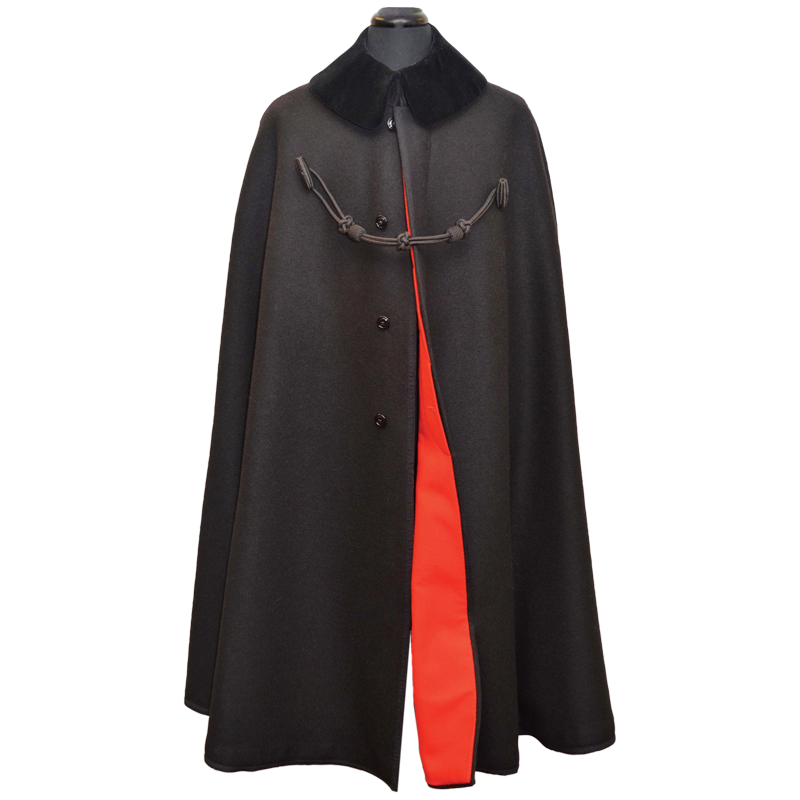History Of The Cape

If you’ve taken a trip to the barbershop or hair salon recently, you’ve no doubt been draped in an accessory that once held a glamorous and prominent position in society. That garment, known as the cape, has been around since ancient civilization. In those times, citizens of the ancient world in the Mediterranean region often wore large squares of fabric tied or pinned at the neck to serve as an outdoor covering.
Since then, the cape has traditionally been embedded in wardrobes throughout the history of costume, for men and women. In the 17th century, capes were often converted into coats. Men sported these garments which often had wide collars and varied the way they were worn depending on the shape. Larger, more voluminous cloaks were worn over both shoulders, while circular capes were hung over one shoulder and secured with a cord that passed under the collar. The French went on to call these Balagny, after a popular military hero.

Fast forward to the modern era, in 1938, the boat cloak, a variation of the traditional cape, was a required item for officers in the Marines. The boat cloak served as a formal garment for male officers to wear with traditional blue dress uniform. Today, the boat cloak remains an optional item of bespoke clothing SNCO’s and officers are permitted to wear. These often serve as alternatives to the more utilitarian trench coat. The cape can also be found in contemporary garments worn out on the battlefield, such as rain capes (an American take on the poncho), which protect soldiers from wet elements, such as rain.
The 1930’s also birthed a serialized drama called The Shadow. In The Shadow, the protagonist is a vigilante that operates in the dark under the guise of justice and serves as an early example of the cape being integrated into popular culture. Following this series, we begin to see a trend in comic-books of heroes sporting capes such as Superman (1938) and Batman (1939). Harry Potter wore one for invisibility and Edna Mode, arguably the Anna Wintour of the superhero universe famously refrained from allowing members of The Incredibles to participate in this trend.
For Spring/Summer 2020, O.N.S. Creative Lab and NYC indie label Death to Tennis came together to introduce a technical and cheeky take on the classic cape. The Fin First Poncho, with an architectural nod to the poncho, is influenced by the isotopes of perverse Olympics such as couch-surfing. The fabric has been updated to reflect our modern times; less velvety capes of yesteryear and more techno nylon that proves to be a functional, fluid solution to a style traditionally known for its stuffy elegance. While the tactical angle is present, the hue has been updated to attract the sartorially inclined. The tailoring, sharp and modern, leaves no room for desire among those whose grandfathers served and proudly wore their boat cloaks to formal events.
As history dictates, the cape has been an essential part of our lives as far back as the B.C. era and still enjoys it’s position in society as both formal dress and as a signifier of justice in the larger canon of popular culture. From magicians in the subways of NYC to couture houses in France, the cape remains an item of clothing many still find elegant and intriguing, despite the prominence of modernized outwear. Edna Mode may still feel existential about it all, but this style has proved that it’s eternal.
Discover the Domani collection – here
Words by: Rhamier Auguste










